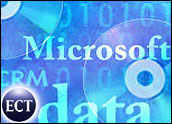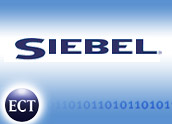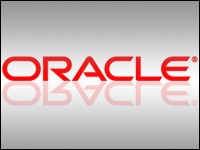
Microsoft extended its move into the business intelligence (BI) market this week through its acquisition of ActiveViews, a privately held developer of ad hoc reporting software based in Provo, Utah. Under terms of the deal, five members of ActiveViews’ team will move to Microsoft’s Redmond, Washington-based headquarters, while the rest will remain at the Provo site.
Microsoft’s purchase of the company follows a general trend of consolidation in the business intelligence arena. The software giant plans to place ActiveViews into its recently formed SQL Server Reporting Services group.
Expanding SQL Reporting
“The acquisition of ActiveViews will increase the pressure on the third-party tools used for reporting relational data, such as Cognos ReportNet, Impromptu, Business Objects and Hyperion,” Nigel Pendse, author of the OLAP Report, told CRM Buyer.
ActiveViews is based on Microsoft.Net and SQL Server Reporting Services, which shipped in January. Microsoft has not set a specific deadline for incorporating ActiveViews functionality into its Reporting Services products.
“Microsoft looks at acquisitions differently than other software companies,” Chris Selland, vice president for sell-side research at Aberdeen Group, told CRM Buyer. “Most software companies are looking for customers. Nearly everyone already owns a Microsoft product, so it’s looking for smaller companies with excellent technology to enhance or extend those products.”
Tumbling Mountains of Data
Although reporting is a critical part of almost any company’s business, historically it has not been easy. Reporting mechanisms rarely are included in database packages, so companies must buy them from third parties. Too often, those add-ons do not integrate well with applications common to the rest of an enterprise. This drawback makes the process of developing and sharing reports a challenging and labor-intensive one.
Today, database reporting services are normally used by information technology (IT) users or others with considerable programming or database experience. In business intelligence, these services help mine the databases, data warehouses, ERP and CRM applications that companies have already invested heavily in and that are now huge reservoirs of data. These reservoirs need to be combed and analyzed to drive better business performance by enhancing relationships, creating the right sales opportunities and spotting trends.
End-User Need
With the growing amount of data found in organizations, there is also an increasing need for end users to be able to access and manipulate that data. The IT department is often a bottleneck in getting access. With its latest purchase, Microsoft is seeking to make business intelligence applications more readily available. By incorporating ActiveViews’ ad hoc reporting capabilities, the company is moving to empower end users by answering their need for straightforward query and reporting access to data.
“Many of today’s databases are write-once read-never,” Jim Dickie, a partner at CSO Insights in Boulder, Colorado, told CRM Buyer. “What’s needed is data access for normal people so that the sales and business people can see how to increase their efficiencies. Everyone knows what to do. Now they need to focus on how to do it. And this calls for business intelligence tools anyone can use.”
King of OLAP Market
Online Analytical Processing (OLAP) software helps users analyze data stored in databases. Specifically, it helps users analyze the different dimensions of reservoirs of data, providing new views of that data and previously unseen interconnections. The OLAP server has special functions for analyzing data and resides on a network between a client computer and a database management system (DBMS). It understands how the data is organized within the database.
OLAP is a growing segment of the BI market that includes Microsoft’s SQL Reporting Services. A study published by the OLAP Report and authored by Pendse last year claims that the 2003 market for OLAP software totaled $3.7 billion, and it places Microsoft at the top of the OLAP heap with 26 percent market share. Also, the report states that other vendors — Hyperion Solutions, Cognos and Oracle — experienced a decline in the 2003 OLAP sector while Microsoft found, and will continue to find, growth.
“Microsoft has always been expedient when it comes to finding and leveraging new technologies into its products,” Aberdeen’s Selland said. “Acquiring ActiveViews is their classic acquisition style.”
With business intelligence becoming omnipresent throughout most enterprises, this acquisition places Microsoft in a position to provide end users with a viable solution and gain market share.











































